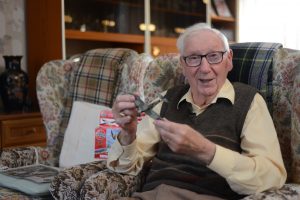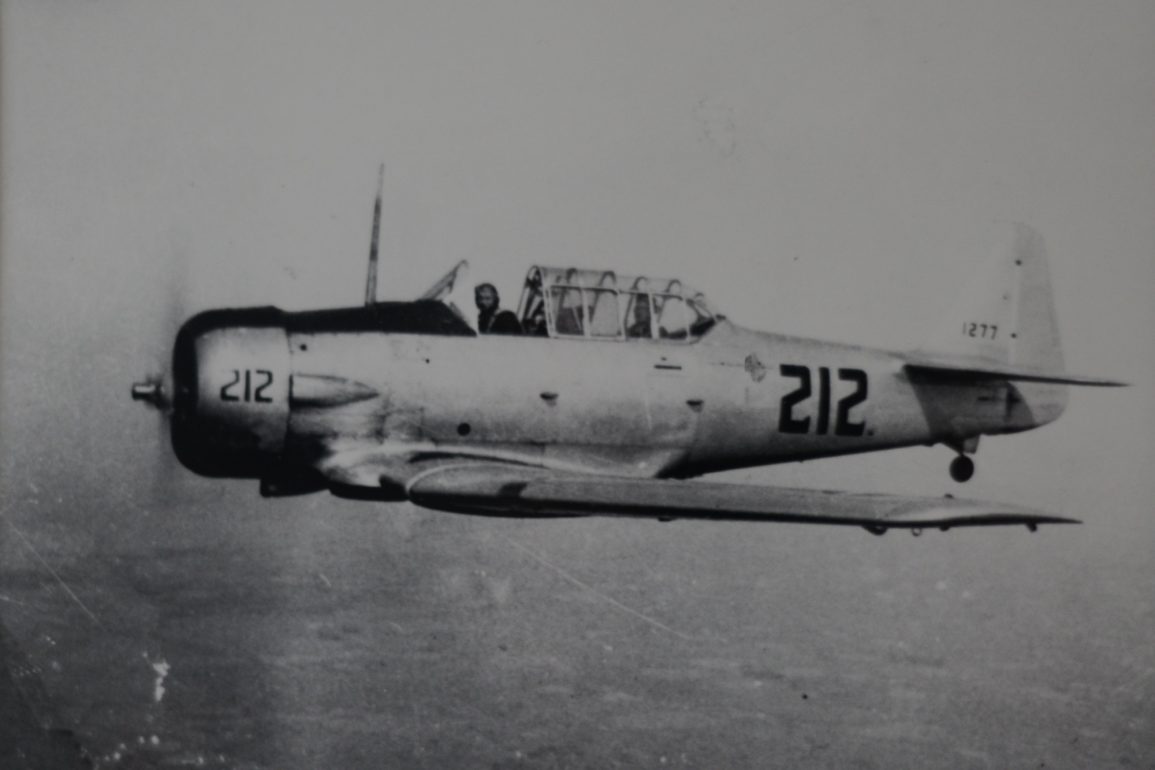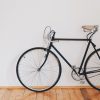Remembrance Sunday 13th November – Remembrance Sunday is a national opportunity to remember the service and sacrifice of all those who have defended our freedoms and protected our way of life.
As part of Airfix’s 70th anniversary (one of the world’s oldest and most well-known manufacturers of model kits), Airfix met with three wartime veterans, all of whom either flew or were in direct contact with Spitfires, to capture and share their incredible memories – their military journey and recollections of the aircraft.
Flight Lieutenant Eddie Habberley – age 99
I was born in 1923 in Walthamstow, London. When I turned 17 ½ I decided to volunteer for the RAF, but I wasn’t officially called in until I turned 18.
I was first sent down to St John’s Wood to get kitted out with my uniform. I then went for my initial training down in Newquay, Cornwall, for about a year. It was here that we learnt navigation, gunnery, Morse code, maths, bomb aiming, meteorology and a whole variety of subjects. If you passed this initial course, you were then sent down to a holding centre – mine was in Brighton, East Sussex, for a little while. You were then sent up to Blackpool to another holding centre before being told what you were going to do – pilot, navigator, bomb aimer, rear gunner etc. – before being dispersed for flight training. I was lucky enough to be selected as a pilot, which I of course wanted to do!
As the weather wasn’t good, and we were too vulnerable to be shot down by German aircraft, flight training took place outside of the UK in various countries including America, Canada, South Africa, and Rhodesia (Zimbabwe). I was sent to America, travelling on the renowned HMS Queen Mary to get there.
While my first ever flight was in a Tiger Moth (after only six hours of training), in America, alongside ground school again, I got to fly the Boeing STearman 17, a very heavy twin-wing aircraft, and the Harvard. After another year of training, the instructor takes you up for a flight test to see if you pass. If you do, you are presented with your three stripes and your flying brevet. It was at this point that I was sent to RCAF Station Moncton in Canada (another holding centre) before coming back to the UK on a French liner. I had to go back to Blackpool where I was given my next training assignment.
Some pilots went onto twin aircraft, and some onto single aircraft. I got to fly up in Shropshire on the Harvard Mk II – a radial engine monoplane. It was a very good aircraft. Very fast. In fact, as fast as a Spitfire at sea level. It was here that I trained in advanced flying before the RAF deployed me.
I went out to Egypt on a convoy and flew in my first Spitfire – the Mk V. We were in Abu Suweir, off the [Suez] canal, doing a lot of the gunnery practice firing at a drogue with coloured bullets to see what your aim was like. The Spitfire had a Rolls-Royce engine. No other engine sounded like it, it was so distinct. The plane handled so differently. If I were to describe the Spitfire, I would say it had agility, responsiveness, and a lightness of touch.
After jungle training, I went to India where I flew the Spitfire Mk VIII.
I wasn’t ever nervous about flying the Spitfire. The Spitfire flies you, more than you fly the Spitfire. You become part of the aircraft. The spitfire was my bodyguard! I was only nervous about flying over the jungle as there were no landmarks to go by.
From India, I went to Burma with the 615 Squadron. Unfortunately, I wrote my aircraft off in Burma. I was in the hospital for a while and my parents were sent a telegram that I was missing – believed killed.
After I came out of the hospital in Kolkata, I wrote home of course, and up until that time, they didn’t know I was still alive. I was sent on to the 132 Squadron which, back then, was stationed at Kai Tak Airport in Hong Kong. I flew in Hong Kong for a while but when I was asked by the Squadron if I would like to stay on, I said “No, I must go home and see my parents!” I came home and was demobbed in 1946.
It’s difficult to put into words what it’s like to fly a Spitfire. I enjoyed it. Not so much during wartime in Burma of course, but when I was flying it in Hong Kong it was peacetime, so flying was just ‘stooging around’. We were meant to be on anti-pirate patrols, which we did a few times, but most of the time I got to take off as and when I wanted to and fly around how I wanted to. Occasionally, I would call up the Radio Direction Finding (RDF) station. I’d fly out over the new territories in Hong Kong and call the RDF – they’d pinpoint you then give you xyz degrees to check out then you’d fly back home. Mainly I was filling in time and getting in as many flying hours as possible. I’d have to say my fondest memory was my very last flight when I knew I was coming home. By that time, you’d been in the forces a long time.

Life after the RAF?
If you stayed on as a pilot, there was always a risk and there were lots of mini-wars going on. Even during peacetime, there was a risk. For example, after the war, the RAF was tasked with monitoring. Several Spitfires were flown from Cyprus over the area and, as the aircraft wasn’t distinctly marked as British and the relevant people weren’t informed what was going on, quite a number of Spitfires got shot down by the Israelites.
I didn’t continue with private flying as it was too expensive. I went back to ‘civvy street’ and continued my courting. After the war, there was a rule by the Government that if you were employed in a job prior to the war, when you came back, that company was obliged to take you back on staff. I worked in the wholesale grocery trade before the war at Smithfield in London. I went back there but it was different as the company got burnt out in the blitz. While another company took over and I worked for them for a while, it didn’t work out, so I went into the photographic trade. I worked for a company called Ensign, they made the Ful-Vue – a small box camera with a big lens on top, and what you saw in the lens was what you took – they then produced folding cameras called Selfix. Eventually, Ensign was brought out by another company called Ross and I worked for them for a while in Clapham Common. I came away from there and worked for Corfield which was importing 35mm cameras from East Germany – that company was owned by Guinness. Guinness closed it down and took us on as staff. I had a fantastic job working for the main brewery in Scotland for 21 years and I stayed there until I retired.
Why is the Spitfire synonymous with Britain?
The Spitfire became iconic in the Battle of Britain, despite the Hurricane shooting down more German planes than them. If we hadn’t had the Spitfires reclaiming the skies the Luftwaffe would have flown right over, and the German army would have walked all over us. It was only because the German army didn’t have air cover for an invasion that they didn’t invade. Of course, that was the turning point of the war.
The Spitfire earned its reputation. It was a good aircraft for ground attack, fighting and for bombing, and could carry a small 250lb bomb. In fact, many other air forces had the Spitfire including Canada and America, so it was popular worldwide.
Do you remember how to fly?
I remember how to fly. It’s just a feeling that you get. When getting in the car, you just look around you and drive. As a pilot, you do the same, you just fly. It’s like riding a bike. I’ve flown a light aircraft one day a year ever since leaving the forces with an organisation called Project Propeller. Although I’m no longer insured to do take-off and landing, I can still take control of the air.
Your thoughts on modelling and your memories of Airfix?
I didn’t personally make models during the war. If I had any spare time, I’d find the nearest place for a drink, or I used to do a bit of writing. However, after the war, I’d make models with my children. I don’t recall ever making Spitfire models, but we were certainly model railway buffs. I know we have built other Airfix models in the past.
Poppy Watt


